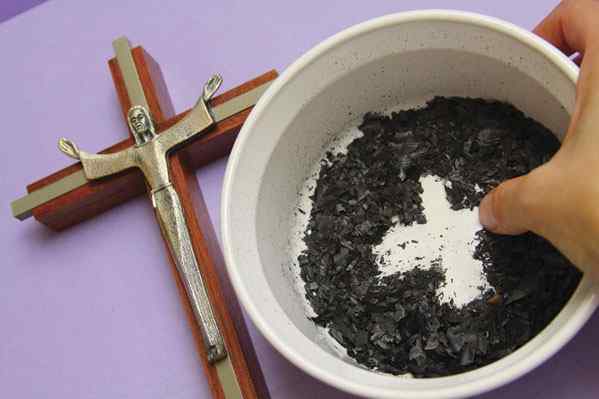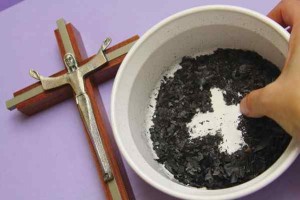
Ash Wednesday
 It was when I entered the Dominican seminary that I learned that the ashes used to mark the foreheads of Catholics with crosses on Ash Wednesday were from the dried palms blessed on Palm Sunday of the previous year. My teacher in the pre-Novitiate also said that old or worn out liturgical vestments may also be burned and used as ashes for Ash Wednesday. And so, every Ash Wednesday, the first day of the Lenten Season, we Catholics attend mass and receive the mark of crosses with ashes on our foreheads. It reminds us that “we are from dust and to dust we shall return.”
It was when I entered the Dominican seminary that I learned that the ashes used to mark the foreheads of Catholics with crosses on Ash Wednesday were from the dried palms blessed on Palm Sunday of the previous year. My teacher in the pre-Novitiate also said that old or worn out liturgical vestments may also be burned and used as ashes for Ash Wednesday. And so, every Ash Wednesday, the first day of the Lenten Season, we Catholics attend mass and receive the mark of crosses with ashes on our foreheads. It reminds us that “we are from dust and to dust we shall return.”
I remember quite well that ever since I was in elementary, we would have a school mass on Ash Wednesday, and all of us students would line up for our foreheads to be marked with crosses of ashes. And we do not wipe it away after a while, but proudly wear that cross of ash on our foreheads until the end of the day. We would even compare the crosses on our foreheads, and look for whoever has the most perfect cross and laugh at those whose crosses were imperfectly marked. And since Ash Wednesday is a day of fasting and abstinence, we were trained by our parents to practice it at the very early stage of our childhood, even if as children, we are not yet obliged to do so because we have not yet reached the required age. We would have seafood on Ash Wednesday and Good Friday, because the practice of abstinence prohibits Catholics from eating meat on those days. Nowadays, having seafood on Ash Wednesday and Good Friday would not seem to be a sacrifice or penance for most of us, since it is much more expensive than meat, hence a luxury rather than a practice of frugality.
When I became a priest, I have had some funny experiences with the imposition of ashes on Ash Wednesday. Once when I was invited to officiate Ash Wednesday mass, most of those who attended were working people from nearby offices. Imagine the ladies, who go to work with their heavy make up on, and during the mass will only get ruined when I impose those big black crosses of ashes on their foreheads.
The imposition of ashes is done after the homily, and people are asked to line up to receive the cross of ashes to be marked on their foreheads. Sometimes, to my surprise, some people would put out their tongue during the imposition of ashes, probably thinking that it was already communion time. And so, sometimes I would also think to myself—does this person want the ash to be put on his or her tongue, rather than on his or her forehead? And when communion time comes, where shall I put the host, on the tongue or on the forehead? Can you imagine how funny sometimes people can be, and likewise how funny sometimes our imagination can wander?
I once attended a seminar on Lenten and holy week liturgy with Fr. Anscar Chupungco, OSB at the Paul VI Institute of Liturgy. And I learned that the Lenten practices and celebrations has a lot of occasions where we either gather together or line up or actually go on a procession. These processions or gatherings, from the first day of Lent which is Ash Wednesday, up to the time of the “Salubong” or the meeting of the Mater Dolorosa and the resurrected Christ, actually has a deep meaning. It is only when we join in the suffering of our Lord Jesus Christ, in His passion and death that we are also able to rise with Him in His resurrection.


No Comments